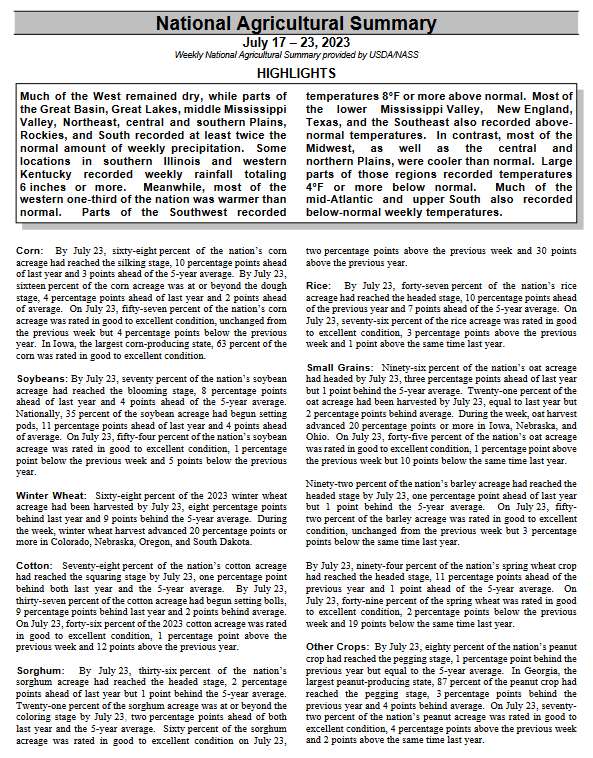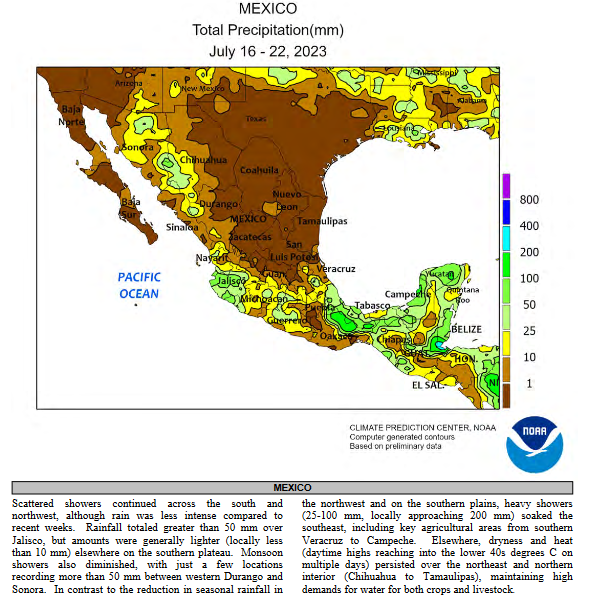This article is based primarily on the July 25, 2023, USDA Crop Bulletin which covers the July 17 to 23 period of time. The USDA report usually becomes available on Tuesdays and I was not able to publish my article which is based on that report until now. I have omitted a number of graphics but they are available in the full USDA Crop Bulletin and the link to that is at the end of the article.
It now seems more like an average crop but it has not gotten worse which is a relief and it seems that some of the crops are doing better.
There is a recent Executive Briefing focusing on Cattle and I have published it in its entirety but with a minimum of comments. I was curious as to why beef prices were so high at the food stores and I think the presentation explains at least one of the reasons for this.
The article includes a short international review of agricultural conditions.
We begin with the National Agriculture Summary. The Tables below the summary have additional data. The boxes with my comments may be incomplete so for crops of interest check the data out yourself to be sure.
| Below is pretty much the same information in table format. However, there is additional information in these tables. |
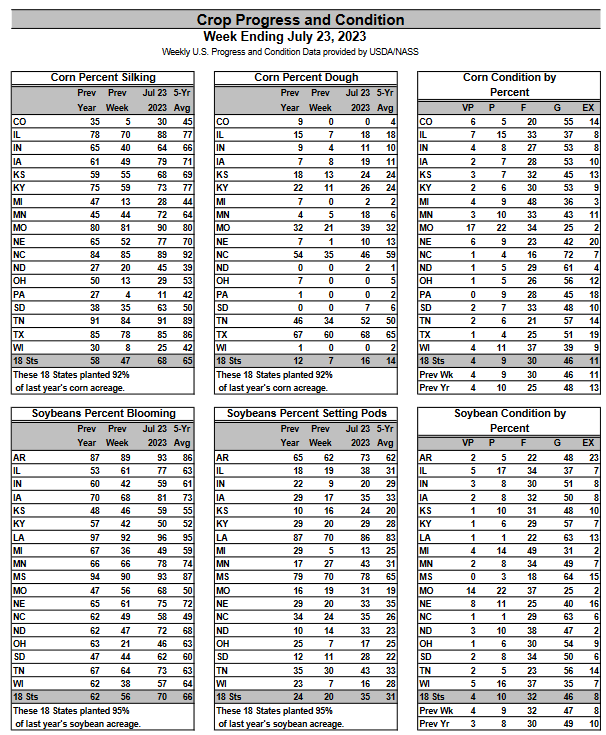
| The condition of corn and soybeans seems to be slowly decreasing which is not good news. |
Let us take a look at the weather forecasts.
| 6
– 10
|
|
|
| 8
– 14 |
|
|
| 3
– 4 |
|
|
HAZARDS OUTLOOKS
Here is the latest Day 3 -7 and Day 8 – 14 hazards forecasts which update only on weekdays. I think it supplements the standard weather forecast.
| You can track the situation daily by accessing our Daily Weather forecast which you can access HERE. But the weather outlook maps in this article also update. Of interest are the areas of excessive heat. |
Looking at the month-to-date precipitation

| We see that the first twenty-seven days of July were mixed in the corn and soybean belts. |
Looking at other crops.
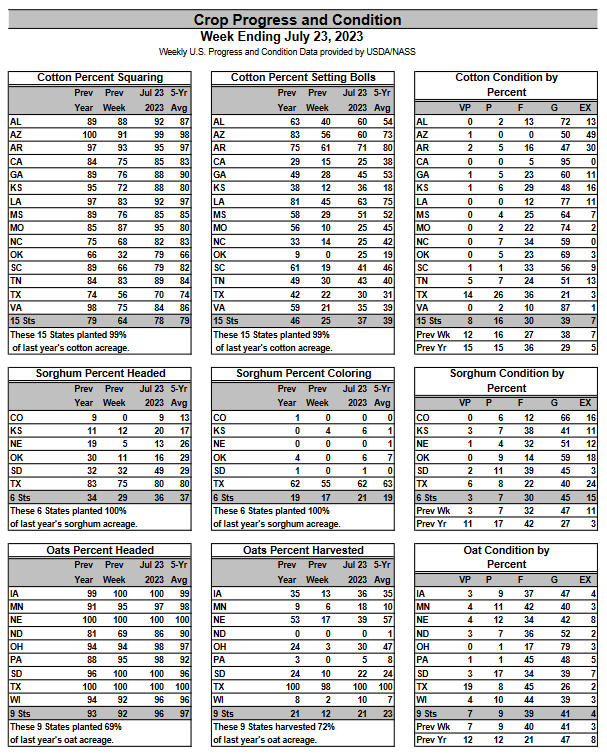
| Cotton is fine. Sorghum is on schedule and in very good condition. Oats are generally fine but the crop quality is not as good as last year. |
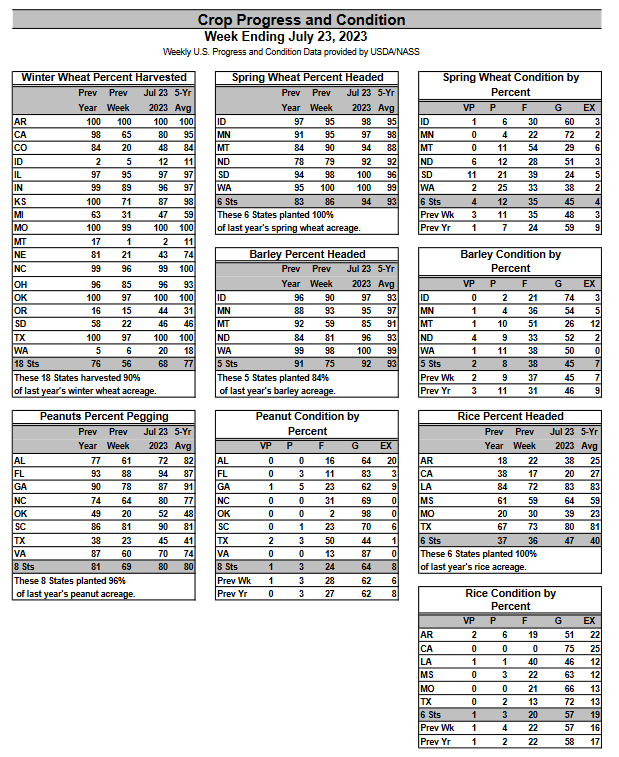
| Winter wheat is below average. Spring Wheat is on schedule but the condition of the crop was much better last year. Rice is fine. Barley is ok. Rce is doing well. |
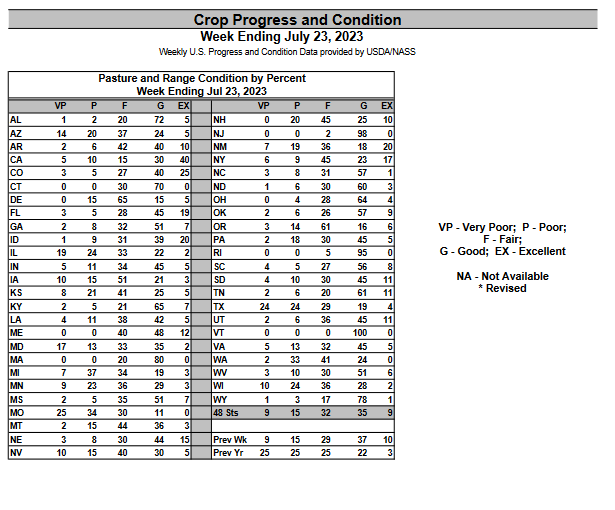
| The pastures are a lot better than last year. |
Some additional detail is provided HEREIt is mostly some additional weeks of data and it is all in larger print. |
Let’s Talk About Cattle. This is from a USDA Executive Briefing. So it has more detail than the usual NASS Report.
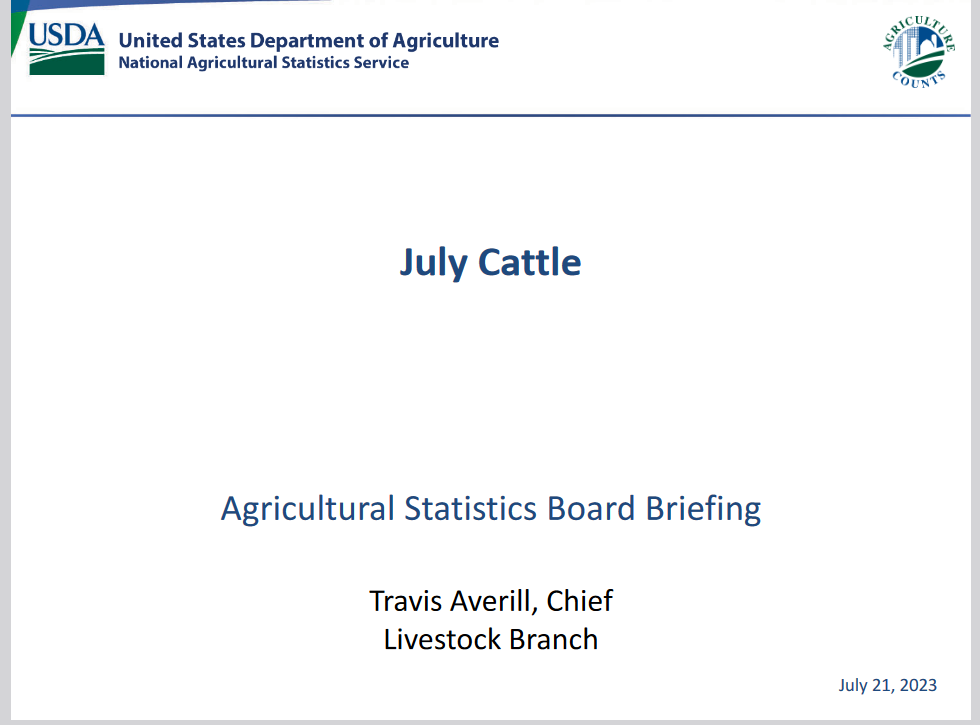

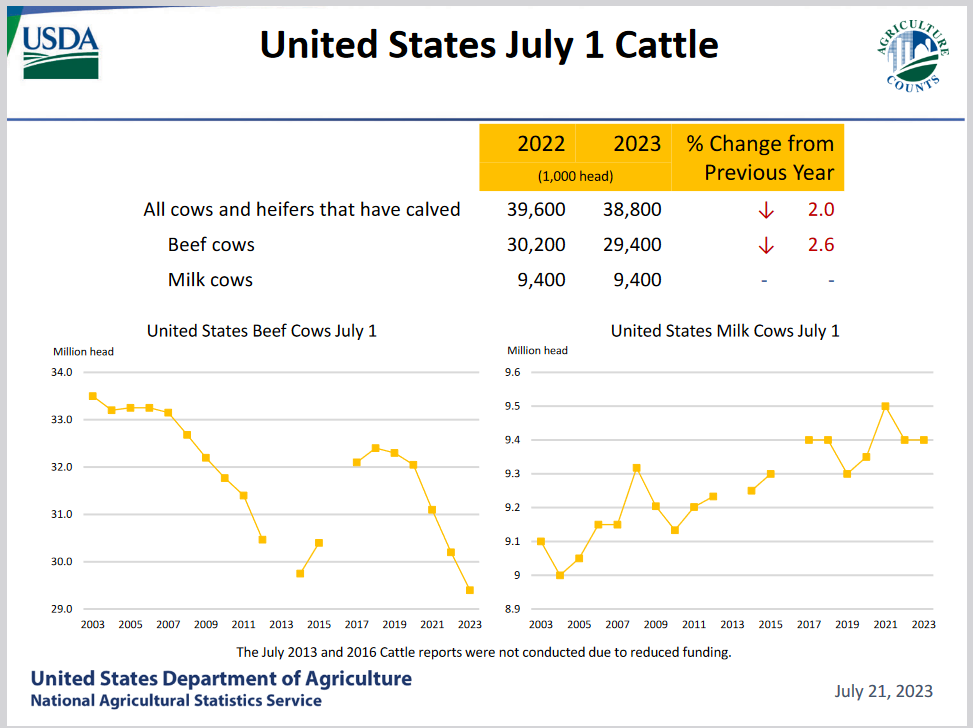
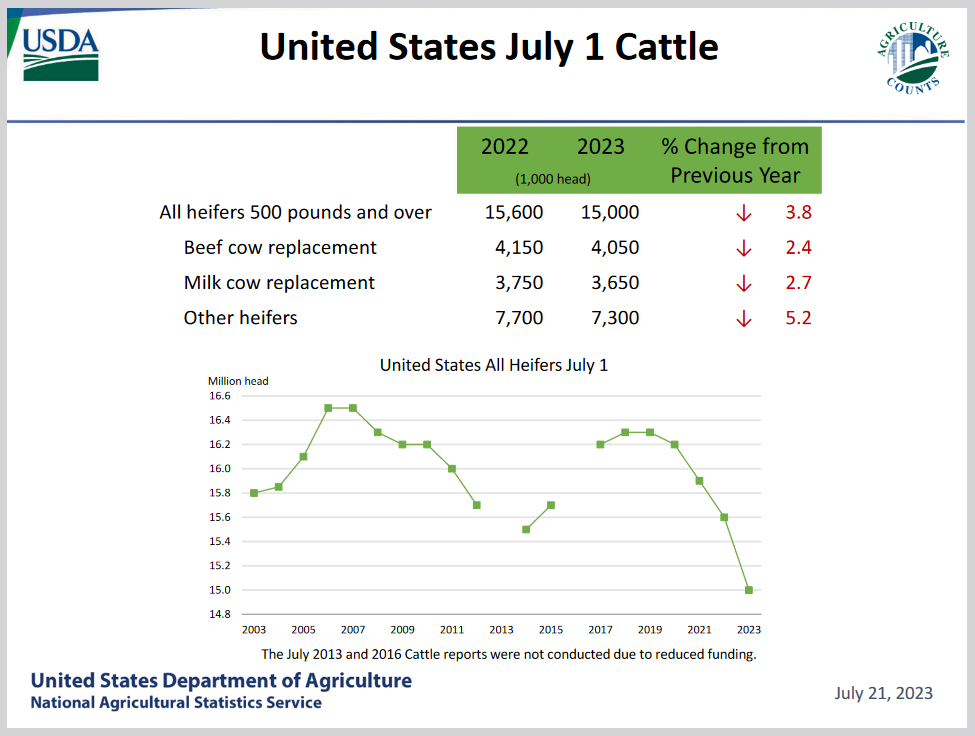


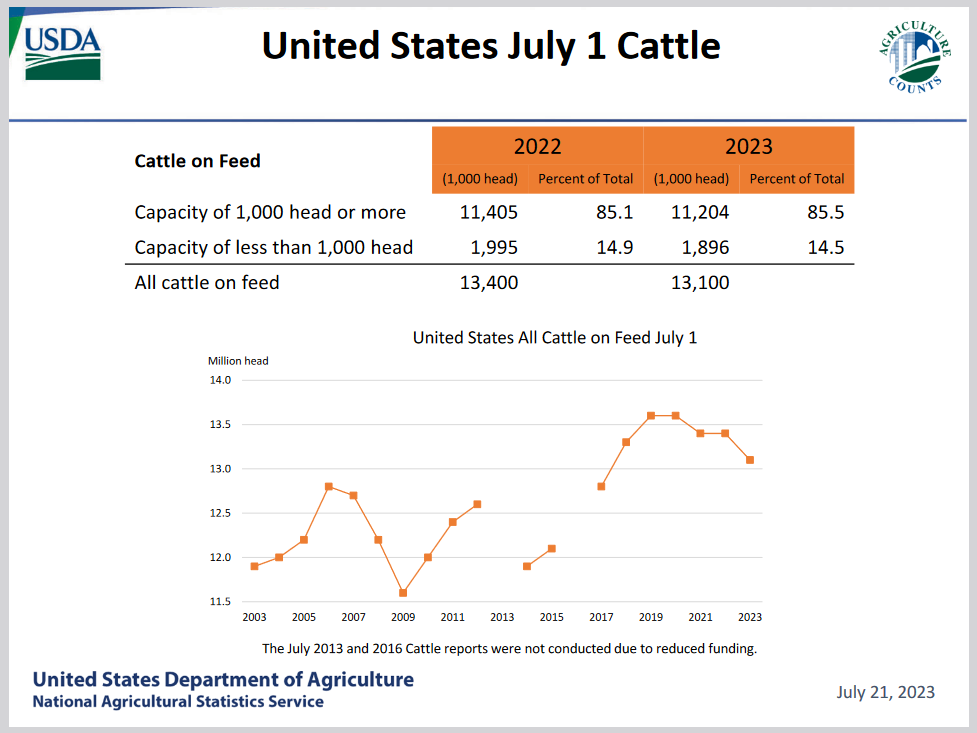
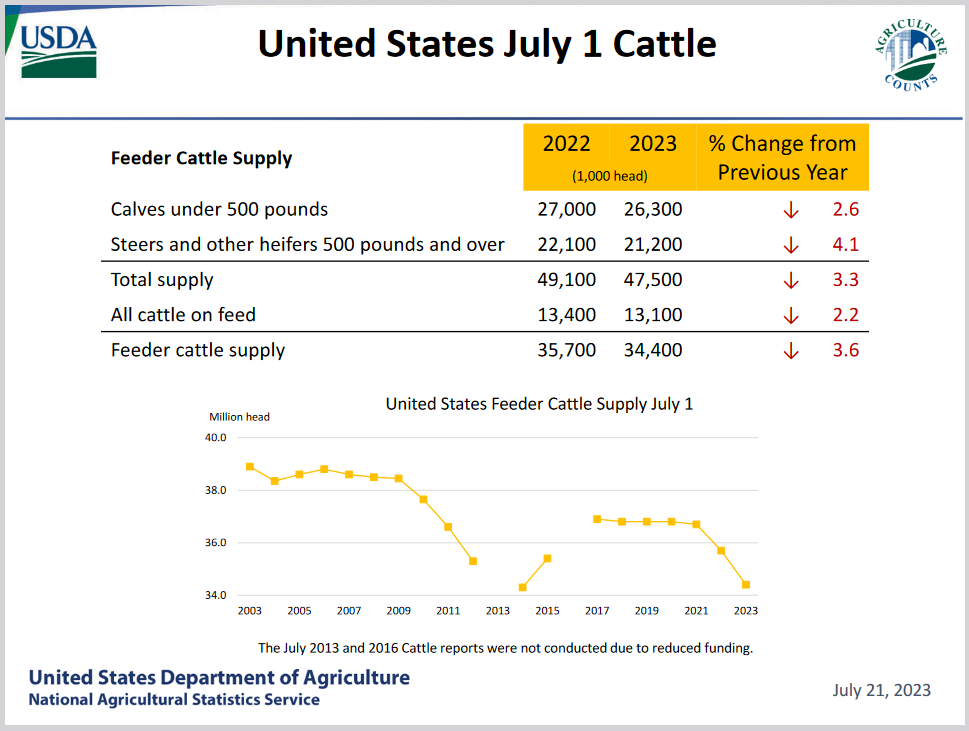
| Not to overly simplify things, but there are simply fewer cattle this year. There are less cattle on feed and fewer coming behind them. The reverse is the situation for dairy cows. I speculate that the drought a few years ago induced ranchers to cull their herds. But this me guessing as to the cause. |
International
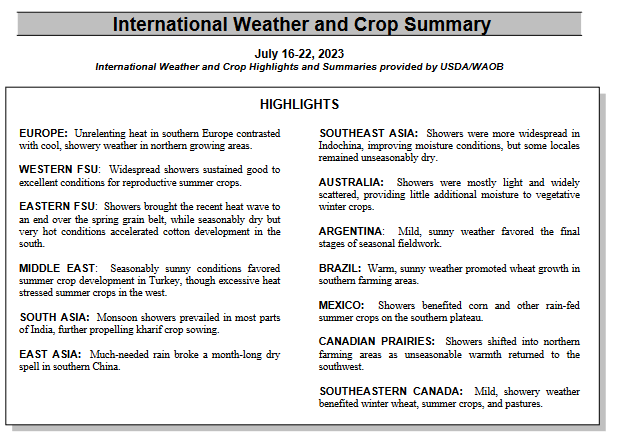

| And here is the map which was provided this week. |
| I am showing Mexico because it informs us of the progress of the Sonoran Monsoon which seems to have been reinvigorated a bit in Mexico. |
Sources of Information
Weekly Updates can be found HERE
and perhaps more directly HERE
Additional Useful Sources of Information
WASDE: World Agricultural Supply and Demand Estimates HERE
NASS Report Schedule HERE
Executive Briefings HERE
Economics and Prices HERE
Office of the Chief Economist HERE.
Drought information by crop HERE
–
| I hope you found this article interesting and useful. |

